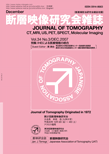IHEのサクセスストーリー〜日米の現状比較〜
原瀬 正敏1)、奥田 保男2)、奥 真也3), 4)
1)豊橋市民病院 医療情報課
2)岡崎市民病院 情報管理室
3)埼玉医科大学総合医療センター 放射線科
4)東京大学22世紀医療センター健診情報学講座
IHE Success Stories : Comparison between Japan and the United
Masatoshi Harase1), Yasuo Okuda2), Shinya Oku3), 4)
1)Medical Information Division, Toyohashi Municipal Hospital
2)Division of Information Management, Okazaki City Hospital
3)Department of Radiology, Saitama Medical Center
4)Healthcare Related Informatics, 22nd Century Medical and Research Center,
The University of Tokyo Hospital
要旨
政府からe-Japan戦略が打ち出され、医療全体に効率化や情報の共有化が求められる中、医療情報システム導入の促進がみられる。検査部門においてもデジタル化が進み、紙やフィルムといった旧来のアナログ形式の診療記録が電子化され、ネットワークを介して情報の共有を行うことが普通になってきている。
しかし、情報技術を単に用いれば情報の共有化が可能になるとは限らない。医療情報システムの構築は、ユーザにとって多大な時間を必要とし、さらには多額な費用もかかる。こういった構築上の問題点を解決するべく誕生したのがIHEである。
IHEは米国で始まり、今や欧米やアジアの諸外国に活動が広がっている。IHEではワークフローに重点を置き、標準化技術を利用した複数の統合プロファイルを提案している。これらの統合プロファイルは各医療機関にて実装され、日本と米国共に「サクセスストーリー」として紹介をしている。統合プロファイルの適応範囲を比較すると、日本と米国共にワークフロー系の採用は多いが、米国では採用例がないITインフラ系が日本で採用され、逆に共有化する情報の標準化に関するコンテンツ系は米国の方が多い。これは、両国のこれまでの医療情報システムの発展経緯と保険制度などの医療事情の違いによるものと考える。
Abstract
So-called “e-Japan” strategy has been proposed by the Government and in this context, a new tendency could be recognized where effectiveness and integration be placed more emphasis, which resulted encouraging nationwide the implementation of medical informatics system. Not only in the department of radiology but also in other departments such as that of laboratory tests, digitally expressed medical records, with the help of information networks as its infrastructure, began to replace conventional, i. e., analog data such as papers and films.
However, mere use of standardization technology does not enable sharing information. Design of medical informatics system forces users to devote themselves as well as requiring a great amount of investment for that. Integrated the Healthcare Enterprises(IHE)was given birth in order to resolve these implementation related problems.
IHE has been initiated in the United States and at present expanded its activity to Europe and Asia. It respects clinical workflows in hospitals and proposes a collection of integration profiles making the best of standardization technology. These profiles have been largely implemented in clinical settings, which are called “Success Stories” in IHE and they are open public in Japan as well as in the United States. The comparison about the applied profiles and actors in the success stories from these two countries, was conducted. In short, profiles concerning clinical workflows are commonly used in both countries; on the other hand, in Japan, profiles concerning IT infrastructure tended to be applied, whereas profiles concerning “contents” were frequently implemented in US. These differences were considered to reflect the differences of security systems, and national extensions have been tailored for this purpose, as well as the chronological differences of success stories.
These results could suggest the future directions which IHE Japan should be bound to.
Key words
IHE、サクセスストーリー、日本版拡張 ,success stories, National Extention
|

